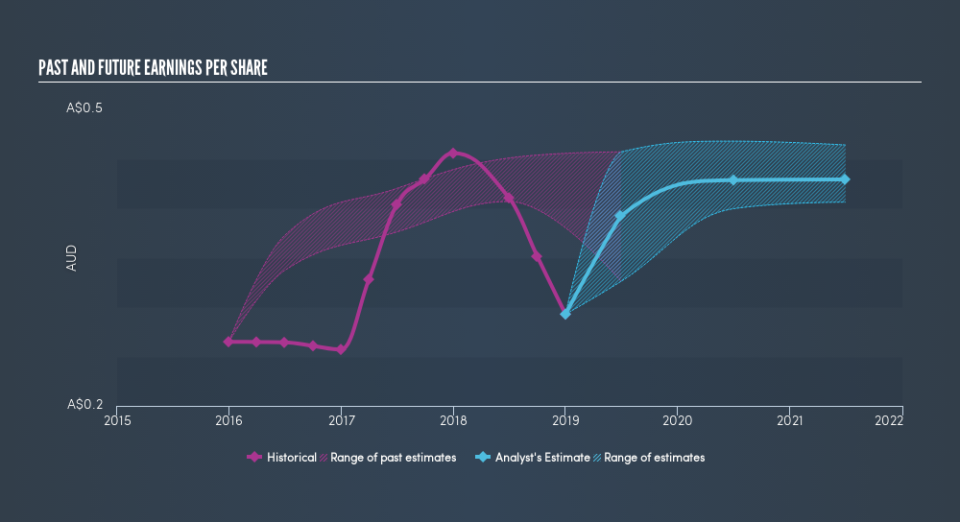If You Had Bought Insurance Australia Group (ASX:IAG) Stock Three Years Ago, You Could Pocket A 35% Gain Today

Want to participate in a research study? Help shape the future of investing tools and earn a $60 gift card!
By buying an index fund, investors can approximate the average market return. But if you pick the right individual stocks, you could make more than that. Just take a look at Insurance Australia Group Limited (ASX:IAG), which is up 35%, over three years, soundly beating the market return of 24% (not including dividends). However, more recent returns haven't been as impressive as that, with the stock returning just 6.0% in the last year, including dividends.
View our latest analysis for Insurance Australia Group
While the efficient markets hypothesis continues to be taught by some, it has been proven that markets are over-reactive dynamic systems, and investors are not always rational. By comparing earnings per share (EPS) and share price changes over time, we can get a feel for how investor attitudes to a company have morphed over time.
During three years of share price growth, Insurance Australia Group achieved compound earnings per share growth of 3.4% per year. This EPS growth is lower than the 10% average annual increase in the share price. This suggests that, as the business progressed over the last few years, it gained the confidence of market participants. It's not unusual to see the market 're-rate' a stock, after a few years of growth.
The graphic below depicts how EPS has changed over time (unveil the exact values by clicking on the image).
This free interactive report on Insurance Australia Group's earnings, revenue and cash flow is a great place to start, if you want to investigate the stock further.
What About Dividends?
It is important to consider the total shareholder return, as well as the share price return, for any given stock. Whereas the share price return only reflects the change in the share price, the TSR includes the value of dividends (assuming they were reinvested) and the benefit of any discounted capital raising or spin-off. So for companies that pay a generous dividend, the TSR is often a lot higher than the share price return. As it happens, Insurance Australia Group's TSR for the last 3 years was 60%, which exceeds the share price return mentioned earlier. And there's no prize for guessing that the dividend payments largely explain the divergence!
A Different Perspective
Insurance Australia Group shareholders gained a total return of 6.0% during the year. But that return falls short of the market. It's probably a good sign that the company has an even better long term track record, having provided shareholders with an annual TSR of 13% over five years. Maybe the share price is just taking a breather while the business executes on its growth strategy. If you would like to research Insurance Australia Group in more detail then you might want to take a look at whether insiders have been buying or selling shares in the company.
We will like Insurance Australia Group better if we see some big insider buys. While we wait, check out this free list of growing companies with considerable, recent, insider buying.
Please note, the market returns quoted in this article reflect the market weighted average returns of stocks that currently trade on AU exchanges.
We aim to bring you long-term focused research analysis driven by fundamental data. Note that our analysis may not factor in the latest price-sensitive company announcements or qualitative material.
If you spot an error that warrants correction, please contact the editor at editorial-team@simplywallst.com. This article by Simply Wall St is general in nature. It does not constitute a recommendation to buy or sell any stock, and does not take account of your objectives, or your financial situation. Simply Wall St has no position in the stocks mentioned. Thank you for reading.

 Yahoo Finance
Yahoo Finance 
